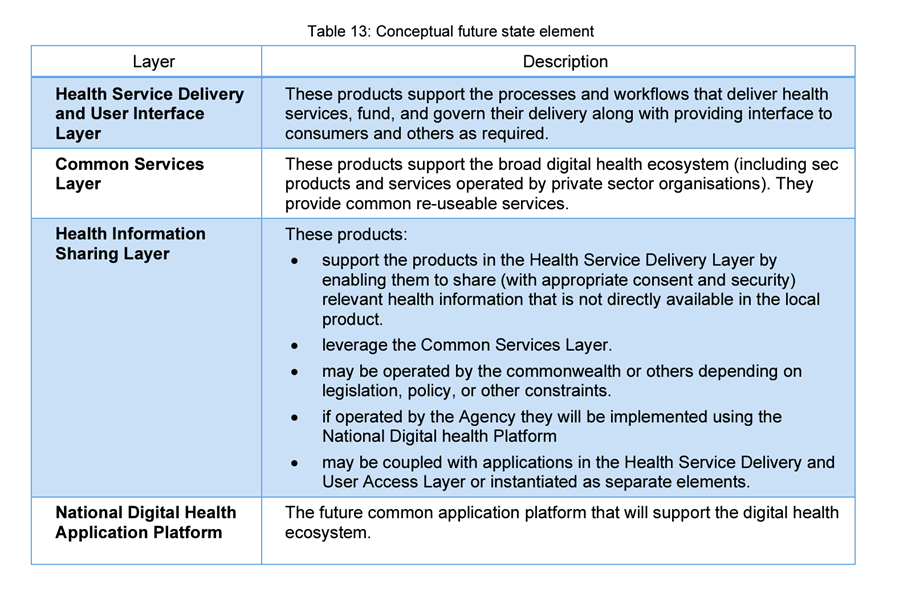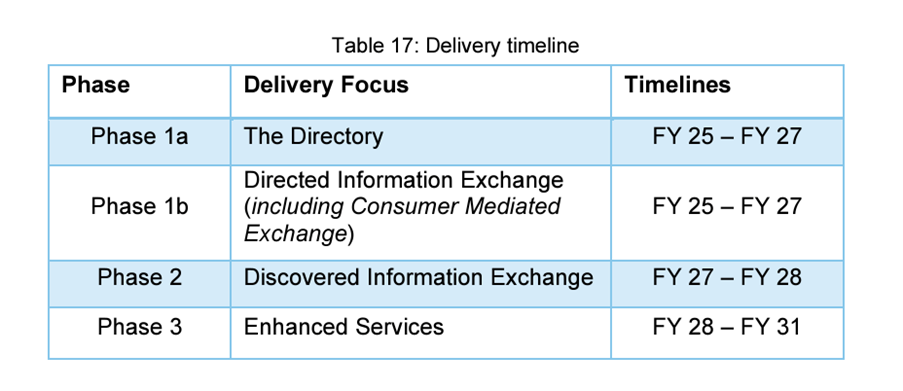
Software vendors across the country just got sent quite a bit of weekend homework: the ADHA’s updated take on the national HIE architecture.
Software vendors around the country who have been crying out for a little bit more guidance on how they might better prepare to get involved in what is shaping up as the country’s largest digital health infrastructure project since the My Health Record, will likely be spending this weekend poring over today’s release of a Draft of the Australian Digital Health Agency’s Health Information Exchange Architecture and Roadmap.
Announcing the release of the draft document earlier today, ADHA Chief Digital Officer Peter O’Halloran said that the agency was releasing the draft document early with the intent of better engaging stakeholders in helping “craft the vision of the HIE into a final state”.
The agency is seeking immediate feedback via an online survey HERE (last day to participate is 8 November ) and a free webinar on the topic on 28 October from 11.30am, which you can register for HERE.
O’Halloran neatly summarises what the agency is trying for with HIE the project as follows:
“The HIE will play a central role in facilitating person-centred, connected healthcare across the country by ensuring seamless information flow between various healthcare settings.
“[It] will deliver a set of national capabilities using a consistent approach, based on agreed standards, to facilitate the sharing of health information across existing systems such as My Health Record and other data sources. It will evolve and deliver new functions over time to meet the continuous changing needs of clinicians and consumers.”
Which doesn’t tell us a lot given that if you substituted HIE for My Health Record in the first sentence, you might have read the same sentence 10 years ago.
Notwithstanding, there is a lot of detail in this document which confirms we are witnessing a pretty significant pivot from the agency towards trying to introduce a significant new capability for the system to poll distributed data in real time as a means of facilitating data sharing.
This is of course on top of our current centralised infrastructure in the My Health Record.
That the My Health Record looks like it is going to become a subset of the HIE capability in that as well as talking to every other meaningful health provider database distributed across the country, it will also be talking to the My Health Record, feels like the nub of the change we are witnessing.
Reading between the lines?
The HIE is the main game from here on in for data sharing, so vendors best get their head around what the agency is thinking fast, both so they can participate going forward in any related upcoming contracts (some vendors already believe that the recent My Health Record FHIR upgrade tender is setting parameters for the HIE work), and so the agency doesn’t do anything silly from a technical perspective as far as local vendors are concerned.
Excited vendors wanting to get into the gory detail on actual architecture will probably just want to turn to page 38 of the draft document and start reading furiously (or you could try to interpret the diagram below which isn’t a bad attempt at showing vendors everything they are thinking in colour pictures).

As far as hardcore architecture ideas go, the document starts by softly outlining key philosophical shifts across the system the project is going to attempt. These are summarised pretty well in the diagram below.
In one way it’s a good way to create a framework for the changes coming, but it’s also a pretty classic piece of consultant work (good work) dealing mostly largely with the political PR framing the project as opposed to the actual technical architectural issues in play.
The document does get to some of those real structural issues too to an extent – more for sure than the Agency has let go up until now.
Under section 5.2 in Conceptual Future State, the agency outlines the broad view of what the key technical capabilities in play will likely be and how they should be interacting as the project unfolds. The chart below summarises the Agency position.

In what is a pretty comprehensive approach to helping everyone understand how the Agency got to the above position the document also outlines what current technology they feel is play that is most relevant in achieving the HIE goals and what assumptions and decisions they are making around that technology.
Key among these elements include:
- That the project expects to follow the Platform as a Service (PaaS) model, with new application(s) deployed on top of the platform (if appropriate).
- Integration will play a major component, to ensure that there is a clear separation between the systems with a view to insulating the project against technology changes that will inevitably occur during the life of the project.
- That health information and how we manage it, which might normally be considered separately from a project like this, and which is currently being spearheaded by the CSIRO through its Sparked program, will be tightly aligned into the project.
- Security is critical (okay so LOL on this point, but obviously very important and needs to be said).
- The whole project will be tightly aligned with standards around technology which everyone already understands is in play, and which may have to be mandated at some point by government.
- The project must continually contemplate the acquisition, development and maintenance of comprehensive information about stakeholders, including providers, consumers, and vendors.
In this last respect the Agency has already started on aligned information and directory infrastructure projects.
Importantly, the document says that the HIE will be actively involved in supporting the management of the information of all these stakeholders and the relationship between each stakeholder. The document goes on to outline its wish list of technical capabilities for the HIE, all 23 of them, and by the time you get to number 23 you do start to wonder whether the timeline that the document provides for the project early on – seven years all up – might be a bit ambitious.

Sound familiar?
Some aspects of the document do feel a tad deja vu certainly, but overall, it’s a very comprehensive attempt at putting some meat on the bones of what so far has been a pretty bold vision.
It’s worth the weekend read.

